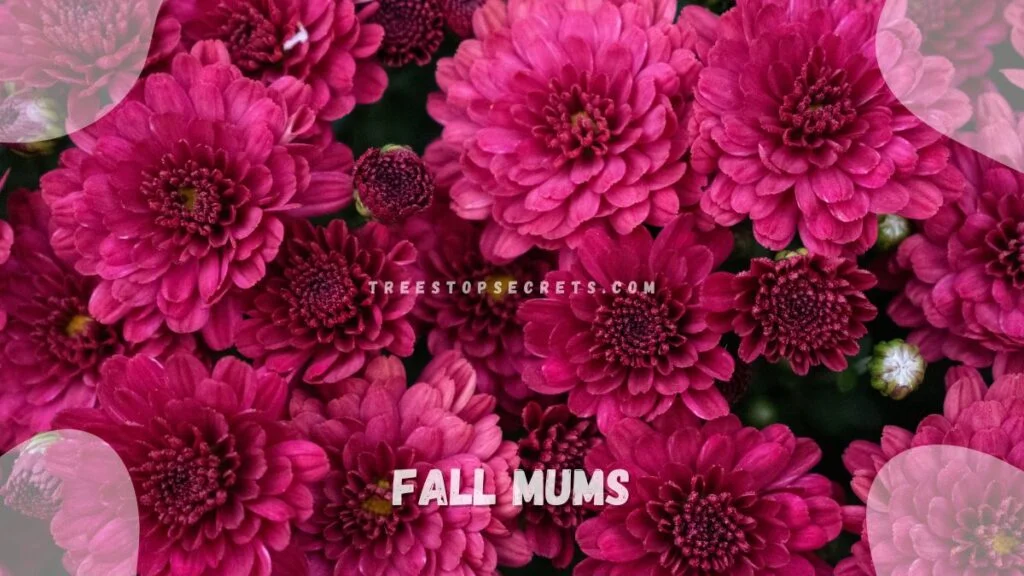Did you know that the vibrant and resilient flower mums plant is not just a pretty face in your garden but also boasts impressive air-purifying qualities? With their stunning blooms and air-cleansing abilities, chrysanthemum plant mums are a must-have for any green space. These plants not only brighten up your surroundings but also work tirelessly to improve the air you breathe. Whether indoors or outdoors, flower mums bring beauty and health benefits to your environment effortlessly.
Get ready to discover the wonders of the flower mums plant as we delve into its fascinating characteristics, care tips, and creative ways to incorporate them into your living spaces. Enhance your surroundings with these charming blooms that do more than just look pretty!
Key Takeaways
- Plant Mums with Care: Ensure proper planting depth and spacing to promote healthy growth and vibrant blooms.
- Regular Maintenance is Key: Water mums consistently, deadhead spent flowers, and provide adequate sunlight for optimal results.
- Safety First: Be cautious with fertilizers and pesticides around mums, as they can be sensitive to chemicals.
- Get Creative with Design: Experiment with different colors and arrangements to create stunning floral displays in your garden or home.
- Stay Informed: Refer to FAQs for additional tips and solutions to common mum-related queries.
- Enjoy the Beauty: Embrace the beauty of mums and the joy they bring to your surroundings.
Understanding Mums

Basics of Growth
Chrysanthemums, commonly known as mums, are popular fall garden flowers with a rich history. They require well-drained soil, adequate water, and regular fertilization. In various countries, chrysanthemum flowers symbolize different meanings such as honor and loyalty.
Zones and Climate
Mums thrive in zones 5 to 9, where they experience a cool climate during the growing season. Full sunlight is crucial for their growth and flowering. The shorter days of autumn act as the triggering factor for mums to start blooming.
Height and Spread
Mum varieties come in a range of shapes and sizes, from petite button mums to large decorative ones. Sunlight directly impacts the growth rate and overall health of mum plants. To encourage branching, regular pinching of the stems is essential.
Color Varieties
Chrysanthemum flowers exhibit a wide array of colors, including white, yellow, pink, and purple. Bicolor flowers, featuring two distinct colors on one bloom, add visual interest to gardens. Sunlight plays a vital role in promoting abundant flower head production.
Sun and Soil
During the growing season, mums prefer full sunlight to thrive and produce vibrant blooms. Rich, well-drained soil is essential for their root development and overall health. Insufficient sunlight can lead to weak stems and reduced flower production.
Planting Guide
Best Time to Plant
Plant mums ideally in early spring or late summer. Planting before a killing frost ensures mums establish well. Early spring planting benefits perennial mums by promoting strong root development.
Soil Prep Work
Good soil preparation is crucial for mums. Soil should be well-draining and rich in nutrients. Quality soil directly impacts the growth and health of mums and other vegetables.
Planting Steps
To plant mums, choose a sunny location with well-draining soil. Dig a hole twice the size of the root ball. Gently loosen the roots before planting. Water thoroughly after planting to help establish roots.
Divide perennial mums every three to four years to maintain plant health. This process involves separating the plant into smaller sections, each with roots attached. Replant these divisions in suitable locations for continued growth.
Apply fertilizer before bud set in early spring for optimal mum growth. Use a balanced fertilizer to provide essential nutrients for healthy blooms. Over-fertilizing can lead to excessive foliage growth at the expense of flowers.
Care Essentials
Watering Needs
Mum plants require consistent watering to thrive, with the soil kept moist but not waterlogged. The frequency of watering should increase during hot weather to prevent dehydration. Due to their shallow root system, mums are sensitive to both overwatering and underwatering.
Pruning Practices
Pruning is crucial for mum plants as it promotes growth and enhances flowering. By pinching the branch tips regularly, gardeners can stimulate lateral bud growth, resulting in a bushier plant. This practice also improves the overall sturdiness of the mums, preventing them from becoming leggy.
Fertilizing Tips
When fertilizing mum plants, it's essential to use a balanced fertilizer to support their growth. Mums are heavy feeders, requiring regular fertilization throughout the growing season. Applying a dilute fertilizer before bud set is crucial for ensuring healthy and vibrant blooms.
Propagation Methods
To propagate mums, gardeners can utilize methods such as division and cuttings. Dividing mums every two to three years helps rejuvenate the plant and maintain its vigor. Spring is an ideal time for propagation as mums respond well to new growth during this season.
Health and Safety
Disease Prevention
Diseases like leaf spot and powdery mildew can harm mums. These diseases thrive in heat and humidity. To prevent them, ensure good air circulation around the plants.
Leaf spot causes dark spots on leaves, leading to defoliation. Powdery mildew results in a white powdery substance on leaves. Apply fungicides preventively to combat these diseases.
Viral diseases, like mosaic virus, stunt growth and distort flower color. They spread through infected tools or insects. Remove infected plants promptly to prevent further spread.
Pest Control
Common pests like aphids and spider mites can damage mum plants. Aphids suck sap from leaves, causing wilting and yellowing. Spider mites create fine webbing on leaves.
Pests weaken plants, making them susceptible to diseases. Implement pest control measures such as insecticidal soap or neem oil sprays. Regularly inspect plants for early pest detection.
Pest control is crucial to maintain plant health and vigor. Without proper control, pests can multiply rapidly and devastate mum plants' overall well-being.
Design Ideas
Garden vs Florist Mums
Garden mums, also known as hardy mums, are ideal for outdoor planting and can withstand colder temperatures. These mums have thicker stems and are more tolerant of various growing conditions. In contrast, florist mums are typically grown in greenhouses and are more delicate.
When caring for garden mums, ensure they receive adequate sunlight and well-drained soil. Florist mums, on the other hand, require more precise care, including controlled temperature and humidity levels.
Choosing Varieties
When selecting mum varieties, consider factors such as bloom time, height, and color. Choose varieties that suit your gardening style and climate. The right mum variety can enhance the overall aesthetics of your garden.
Tips for choosing mum varieties include researching different types, considering your gardening goals, and seeking advice from local nurseries. Variety selection is crucial for achieving a visually appealing garden design.
- Factors to consider:
- Bloom time
- Height
- Color scheme
Color Combos
Color combinations play a significant role in creating visually appealing gardens. Complementary colors like purple and yellow or orange and blue can create striking contrasts in your garden. Experimenting with different color combos can add depth and interest to your outdoor space.
Examples of complementary color combos for mums include:
- Purple mums with yellow marigolds
- Orange mums with blue salvia
Color combos not only enhance the aesthetic appeal but also evoke emotions and create a harmonious atmosphere in your garden.
Garden Placement
Strategic garden placement is essential for the optimal growth of mum plants. Ensure your mums receive adequate sunlight based on their specific needs. Proper placement can also protect the plants from harsh weather conditions and pests.
The benefits of proper garden placement include improved air circulation, reduced risk of diseases, and enhanced blooming. Consider placing your mums in areas where they can thrive and contribute to the overall beauty of your garden.
FAQs
Annual or Perennial
Annual mums are plants that complete their life cycle in one growing season, while perennial mums return year after year. Growing mums as perennials offers long-term benefits, saving time and effort each spring. Perennial mums can survive for many years, providing beautiful blooms season after season.
Safety for Pets
When it comes to pets and mums, it's essential to consider safety precautions. Mums may pose risks to pets if ingested, causing mild gastrointestinal upset. To create a pet-friendly garden with mums, ensure they are placed in areas inaccessible to pets. Consider planting mums in hanging baskets or elevated planters to prevent pets from interacting with them.
Deer and Rabbit Resistance
Mum plants are known for their resistance to deer and rabbits due to their strong scent and bitter taste. The deterrent properties of mums make them an excellent choice for gardens prone to deer and rabbit damage. By planting mums strategically, you can help protect your garden from these unwanted visitors.
Final Remarks
You now have a solid grasp of how to care for your mums, from planting to design ideas and everything in between. Ensure you follow the guidelines provided to keep your mums healthy and vibrant. Don't forget to refer back to this guide whenever you have questions about your mums.
Frequently Asked Questions
How often should I water my mums?
Water your mums deeply once a week, ensuring the soil is moist but not waterlogged. Adjust based on weather conditions; mums typically require more water during hot and dry periods.
When is the best time to plant mums?
Plant mums in spring after the last frost or in early fall. This allows them to establish roots before extreme temperatures. Choose a location with well-draining soil and ample sunlight.
How do I deadhead my mums?
Regularly remove faded flowers by pinching them off at the base of the stem. Deadheading encourages new blooms and helps maintain the plant's appearance throughout the growing season.
Do mums require fertilization?
Fertilize mums with a balanced, slow-release fertilizer in early spring when new growth appears. Avoid excessive nitrogen, which can lead to leggy growth. Follow package instructions for proper application.
Can I grow mums indoors?
While mums are typically grown outdoors, you can grow them indoors in a bright location with good air circulation. Ensure they receive at least 6 hours of sunlight daily and avoid overwatering to prevent root rot.
Image Source: Paid image from CANVA





